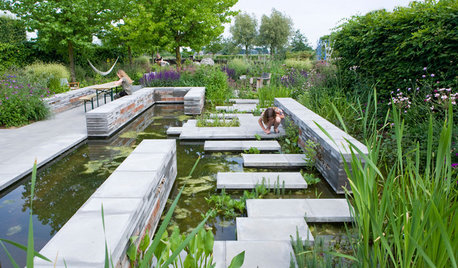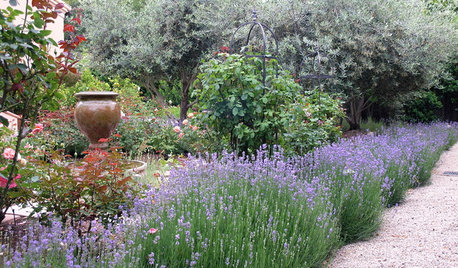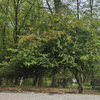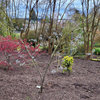Callery Pear growing in open fields not a problem?
tlbean2004
7 years ago
Featured Answer
Sort by:Oldest
Comments (26)
ken_adrian Adrian MI cold Z5
7 years agowisconsitom
7 years agoRelated Discussions
Would you ever grow a callery pear?
Comments (80)ohhhh .. its something else... for sure .... lol surprised you could not smell the stink??? there are some awesome pruning stubs there also ... i am wondering .... if this tree was topped at some point in its life ... i cant even begin to explain... why it has all the shoot growth in the center there .. unless it split oh so many years ago ... i would call this tree... 'firewood' .... ken...See MoreBradford/Callery Pear: Is splitting "guaranteed"?
Comments (19)famartin, about 25 years ago I was at a local nursery and was given 4 Bradford whips that I took to be one year from cuttings. I planted them in different places with NO pruning. All grew exactly like Bradfords do, with a congested bunch of limbs at about 3 feet. Interestingly once they initially branched, they then grew straight up. I still have 3 in good shape after all those years. The nurseries don't have to 'prune' Bradfords' to get that green lollipop, they do it all by themselves!...See MoreAnother callery pear post
Comments (12)I had a huge, standard apple hit with fire blight around ten years ago. I know for a fact it was, because our extension agent was on our property with a group of M.G.s in training and he concurred with my conclusion. It was too large to prune out the affected branches, and I wasn't about to treat it with antibiotic (yes, it can be done). The tree has been free of it every year since. As the last post suggests, there is no way to tell how long or when your trees will decline or just fail, especially from one picture and a description. Yes, taking them all down is a big undertaking and expensive in some localities and our thoughts on it should be just that. Our general opinion on those trees in general. I have seen an ancient one (as far as callery pear goes) what had been standing many years and always enjoyed it in bloom as I drove past the farm on which it was planted. But is was sure shag nasty when it finally did shatter.........and I can't think of a better word to use.........after a storm. If you have doubts before you undertake removal, consult an arborist or your extension agent. If you do decide to remove them, get several quotes. There can be a wide range in fees for tree removal....See MoreCallery Pear Forests
Comments (8)Yea that smell is plenty bad. Here is something else I noticed. The newest McMansions which are spaced out with identical roofs in one of the most expensive looking gated communities and which is still growing as new houses are added has Callery Pears neatly spaced perfectly along every single street and lined up all along the outer edge of the wall that surrounds the G. C.. On the inner streets are lines of them perfectly spaced, its as if the whole place is done up in them. The only other trees you see are pines. Visually you see this landscaped version and right next to it in the wild part is a thicker than what you would think possible Callery forest, its like a story unfolding showing a timeline of events. Unbelievable. I checked our states list and Callery Pear is on the invasive list but not the banned list. Purple loosestrife is on the banned list, illegal to grow or sell here....See Moregardengal48 (PNW Z8/9)
7 years agoLogan L Johnson
7 years agotlbean2004
7 years agoedlincoln
7 years agolast modified: 7 years agoLogan L Johnson
7 years agokentrees12
7 years agoToronado3800 Zone 6 St Louis
7 years agotlbean2004
7 years agogardengal48 (PNW Z8/9)
7 years agoNHBabs z4b-5a NH
7 years agolast modified: 7 years agoLogan L Johnson
7 years agolaceyvail 6A, WV
7 years agowisconsitom
7 years agolast modified: 7 years agopennlake
7 years agotlbean2004
7 years agogardengal48 (PNW Z8/9)
7 years agoedlincoln
7 years agolast modified: 7 years agoLogan L Johnson
7 years agowhaas_5a
7 years agolast modified: 7 years agoalabamatreehugger 8b SW Alabama
7 years agotlbean2004
7 years agoedlincoln
7 years agoalabamatreehugger 8b SW Alabama
7 years ago
Related Stories

EDIBLE GARDENSHow to Grow Your Own European and Asian Pears
Try these trees for their good looks, delicious fruit and wide range of sizes — plus you can espalier them
Full Story
EDIBLE GARDENSWhy Grow Quince? For Beauty, Fragrance and Old-Time Flavor
Delightfully perfumed fruit and lovely spring blossoms make this apple and pear cousin worth a spot in the garden
Full Story
REMODELING GUIDESThe Hidden Problems in Old Houses
Before snatching up an old home, get to know what you’re in for by understanding the potential horrors that lurk below the surface
Full Story
LANDSCAPE DESIGNProblem Solving With the Pros: A Garden Built From Scratch
Nature is reintroduced and redefined in a Dutch urban setting, to forge a dynamic relationship with city dwellers
Full Story
SPRING GARDENINGSummer Crops: How to Grow Strawberries
Pluck your own sweet strawberries right from the garden vine for smoothies, salads or eating then and there
Full Story
FRUIT TREESHow to Grow Your Own Juicy Plums
Easier than other stone fruits and with a variety of colors to choose from, plums are a versatile garden addition
Full Story
FLOWERSHerb Garden Essentials: Grow Your Own Fragrant Lavender
This do-it-all plant is ideal for almost any garden, and its uses are abundant around the home
Full Story
MOST POPULARSummer Crops: How to Grow Sunflowers
Savor snack-tastic sunflower seeds once the radiant blooms have faded — if the birds have saved you any, that is
Full Story
EARTH DAYGrow a Beautiful Garden With Ecofriendly Greywater
Reducing home water waste means lower bills and a healthier planet. Here's how to set up a greywater home irrigation system that can help
Full Story
EDIBLE GARDENSSummer Crops: How to Grow Squash
Almost foolproof and with cheerful flowers, squash comes in a wide range of varieties to plant in spring
Full Story






brandon7 TN_zone7